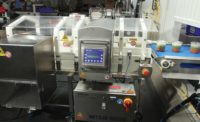The Challenge
Rapid Application IntegrationWhen Maine-based Barber Foods swapped its legacy ERP system for SAP in 2003, the company was running Harbinger’s AS/400-based TrustedLink EDI/400 to provide EDI services. Moving off AS/400 and onto a Windows-based EDI platform would require essentially reinventing the wheel, regardless of the package selected. “We needed to remap all of our trading messages, whether we used the TrustedLink Windows edition or another product, so we were open to starting over with a different vendor if we found a reason to do so,” said Bob Lowe, Barber Foods vice presi¬dent of Information Systems.
Simultaneously, the company faced a timing problem related to integrating its CIMNET Factel¬ligence manufacturing execution system and homegrown Deal trade promotions management application with SAP. Hard-coded integrations would likely take a year or more. The SAP rollout was only six months away. Since some EDI vendors were beginning to offer enterprise application integration (EAI) functionality that would eliminate hard-coding by using the EDI gateway as an integration broker, Lowe was hoping to buy one package that would do double duty.
The Strategy
SEEBURGER Business Integration Server (BIS)The SEEBURGER Business Integration Server had the EDI/EAI recipe that Lowe was looking for. First, as SAP’s EDI partner since 1995, SEEBURGER had proven repeatedly that it could seam¬lessly integrate EDI operations with SAP business processes. Second, the BIS platform had deli¬vered EAI services for well over a decade, while competitors’ newer EAI solutions were relatively untested. Third, SAP channel partner itelligence was the system integrator on Barber Foods’ SAP implementation and had multiple SAP/SEEBURGER integration projects under its belt.
“We knew SEEBURGER could handle our EDI requirements, we saw the BIS product as a good mapping tool for integrating our Factelligence and Deal applications with SAP, and our SAP inte¬grator vouched for SEEBURGER’s flexibility and reliability,” Lowe noted. “That gave us more than ample reason to switch EDI vendors.”
Barber Foods purchased the core BIS 5 product along with SEEBURGER-developed SAP, AS2, VAN, FTP and SQL Server adapters. Then SEEBURGER professional services staff worked with the Barber IT team to get both the EDI and EAI functionali¬ty up and running to coincide with the SAP go-live date.
The project included creating mappings enabling exchange of trading messages with over 125 customers and more than a dozen third-party logistics providers (3PLs) in the U.S. and Canada. Application integration was accomplished with addi¬tional mappings, enabling shop floor data from Factelligence and financial information from Barber’s Deal trade promotion system to be exchanged with SAP using SEEBURGER BIS as the intermediary. In the case of Factelligence, the integration en¬abled direct database read and writes. All SEEBURGER-related work was completed in less than four months.
The Benefits
One Gateway, Many FunctionsFrom the beginning, the SEEBURGER BIS has performed rou¬ting, data transformation and application integration duties for Barber Foods’ inbound purchase orders; advance ship¬ping notices and proof of delivery messages to and from the company’s 3PLs; and assorted Factelligence and Deal transac¬tions such as work orders, inventory updates, marketing spiffs and promotion-related invoice allowances. Over 4,500 of the 13,000 daily BIS messages represent Factelligence data that is translated into the IDOCS format and integrated into SAP.
In addition to replicating Barber Foods’ previous EDI and B2B functionality in the new SAP environment, the deployment has yielded increased efficiencies. The number of inbound custo¬mer orders processed through EDI, for example, has gradually climbed from the low 80 percent range to well over 90 percent, in part because of SEEBURGER’s broad protocol support. This higher level of automation, in turn, has played a role in trimming the size of the customer service staff.
Other efficiencies have been achieved by expanding BIS’ inte¬gration duties both inside and outside the firewall. Customer invoices generated by SAP now are sent through the gateway. So are electronic funds transfers (EFT) coming from customers paying those invoices as well as outbound bank deposits and inbound monthly bank reconciliation reports. The SEEBURGER platform also extracts data from spreadsheet reports transmit¬ted by institutional buying groups and propagates it into SAP’s BI Warehouse; routes spare parts orders from a non-SAP asset management application into SAP for purchase order genera¬tion; and more. This has streamlined functions such as input¬ting buying group data and generating spare parts purchase orders that previously were performed manually.
All integrations are done in-house with SEEBURGER’s mapping designer, eliminating hard-coding as well as the expense of outside consultants. The EAI strategy also is lowering costs by reducing point-to-point connectivity, custom-developed interfaces between applications, and associated maintenance requirements.
The Future
Core Infrastructure ComponentBarber Foods now relies so heavily on SEEBURGER technology that Lowe calls it “a vital system that we can’t live without” and continues to add functionality as Barber’s EDI and EAI needs evolve. When the company’s bank changed the transmission method required for exchanging bank deposits and monthly reconciliation reports from FTP to more secure PGP encryption in 2007, for example, SEEBURGER was able to supply a PGP adapter to do the job.
Moving forward, more BIS-based application integrations are possible. “Every time we think about integrating any system, we turn to SEEBURGER because we don’t have to do any cus¬tom development,” Lowe noted. Meanwhile, the SEEBURGER gateway is carrying a major load at Barber Foods’ data center in Portland. With SEEBURGER on the IT menu, the company’s chicken products have no trouble coming home to roost.
-SEEBURGER Inc.is a provider of global business integration solutions designed to optimize transactions throughout the extended enterprise by automating trading relationships with all partners, regardless of their size and technical resources. SEEBURGER has global offices in Europe, Asia Pacific and North America.

